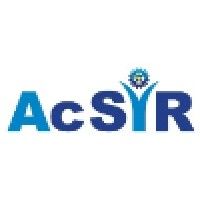预约演示
更新于:2025-10-22

Indian Institute of Chemical Biology
更新于:2025-10-22
概览
标签
感染
肿瘤
皮肤和肌肉骨骼疾病
小分子化药
疾病领域得分
一眼洞穿机构专注的疾病领域
暂无数据
技术平台
公司药物应用最多的技术
暂无数据
靶点
公司最常开发的靶点
暂无数据
| 排名前五的药物类型 | 数量 |
|---|---|
| 小分子化药 | 16 |
关联
16
项与 Indian Institute of Chemical Biology 相关的药物靶点- |
作用机制- |
在研适应症 |
非在研适应症- |
最高研发阶段临床前 |
首次获批国家/地区- |
首次获批日期- |
靶点 |
作用机制 DPP-4抑制剂 |
原研机构- |
在研适应症 |
非在研适应症- |
最高研发阶段临床前 |
首次获批国家/地区- |
首次获批日期- |
作用机制 fungal CYP51A1抑制剂 |
原研机构- |
在研适应症 |
非在研适应症- |
最高研发阶段临床前 |
首次获批国家/地区- |
首次获批日期- |
100 项与 Indian Institute of Chemical Biology 相关的临床结果
登录后查看更多信息
0 项与 Indian Institute of Chemical Biology 相关的专利(医药)
登录后查看更多信息
2,648
项与 Indian Institute of Chemical Biology 相关的文献(医药)2026-01-01·BIOCHIMICA ET BIOPHYSICA ACTA-MOLECULAR BASIS OF DISEASE
SREBP1a induced PINK1-Parkin mediated mitophagy facilitates ovarian cancer progression
Article
作者: Roy, Sib Sankar ; Tanbir, Sk Eashayan
Sterol regulatory element binding protein 1 (SREBP1) has emerged as a central regulator of lipid metabolism, playing a pivotal role in cancer progression. However, the oncogenic potential of SREBP1a is still underexplored. This study investigates the multifaceted contributions of SREBP1a on tumorigenesis, with a particular focus on ovarian cancer. Elevated expression of the SREBP1a isoform was found to enhance proliferation, migration, and invasion of ovarian cancer cells. Mechanistically, SREBP1a induces mitochondrial fission by upregulating DRP1 expression and promoting its activation through ser616 phosphorylation, resulting in a fragmented mitochondrial network that supports enhanced bioenergetic flexibility. In parallel, SREBP1a drives PINK1-Parkin-mediated mitophagy. This coupling of mitochondrial fission and mitophagy possibly ensures mitochondrial quality control, enhances cellular bioenergetics, and increases ATP production, supporting rapid cell proliferation and migration. Experimental evidences reveal that SREBP1 directly regulates DRP1 and PINK1 transcription, reinforcing its role in regulating mitochondrial dynamics. Furthermore, targeting SREBP1 using Fatostatin, a small-molecule inhibitor, effectively disrupts mitochondrial fission, impairs mitophagy, and attenuates tumor progression. These findings highlight the novel role of SREBP1a as a key regulator of mitochondrial dynamics, establishing it as a promising therapeutic target in ovarian cancer. Future studies should explore combinatorial strategies integrating SREBP1a inhibition with existing therapies to improve treatment outcomes.
2026-01-01·JOURNAL OF ETHNOPHARMACOLOGY
Activity-guided isolation of sesquiterpene coumarins from Ferula assa-foetida as monoamine oxidase inhibitors: Investigation on their therapeutic implications in a mice model of Parkinson's disease
Article
作者: Banerjee, Chayan ; Chakraborty, Joy ; Mukherjee, Suchismita ; Yatham, Priyanka ; Kumar, Deepak
ETHNOPHARMACOLOGICAL RELEVANCE:
Ferula assa-foetida, has been used for centuries as a spice, is well acknowledged as a traditional medicine in Ayurveda, and as a folklore medicine across the globe for its neurological benefits. In recent years, modern pharmacological studies have augmented its potential against various neurological disorders, thus signifying its therapeutic importance against neurological disorders in both ethnic and modern medicinal aspects.
AIM OF THE STUDY:
We aimed to identify Monoamine oxidase (MAO)-inhibiting sesquiterpene coumarins from Ferula assa-foetida through activity-guided isolation and evaluate them using in vitro and in vivo models relevant to Parkinson's disease (PD).
MATERIALS AND METHODS:
LC-MS2 was used for the detection of the sesquiterpene coumarins, followed by chromatographic fractionation, and semi-preparative HPLC-mediated purification of the 19 compounds; their structures were established by the combined use of MS, 1D, and 2D NMR techniques. MAO assay identified two active compounds for further study. Toxicity was evaluated in SH-SY5Y cells, Drosophila, and C57BL/6 mice. Effects on mice brain MAO activity and striatal dopamine were examined by LC-MS/HPLC. Finally, neuroprotective effects were validated in an MPTP-induced PD mouse model.
RESULTS:
LC-MS2 analysis confirmed the presence of naturally occurring sesquiterpene coumarin hybrids with significant structural diversity in Ferula assa-foetida oleo-gum-resin, and 19 compounds were isolated for characterization. After preliminary in vitro MAO assays karatavicinol and farnesiferol C were selected for further evaluation. Both compounds exhibited BBB permeability, inhibited MAO activity in mice brain, and effectively elevated dopamine levels in the striatum. Additionally, these compounds demonstrated their therapeutic potential against PD in a mice model.
CONCLUSIONS:
The 7 substituted coumarins with the structurally diverse sesquiterpene moieties displayed varying degrees of MAO inhibition. Further detailed investigation on karatavicinol and farnesiferol C confirmed that both compounds holds significant therapeutic potential to address PD related dopamine deficiency, motor incoordination, and neurodegeneration.
2025-10-07·BIOCHEMISTRY
MksEF Accessory Proteins Inhibit MksB ATPase Activity and Modulate DNA Substrate Binding
Article
作者: Minnu K C, Shamila ; Kumari, Pratibha ; Appaiah, Umesh ; Hegde, Vinayak ; Prasad, M. Dharma ; Kumar, Ravi ; Patra, Dhabaleswar ; Biswas, Teasha ; Sharan, Kunal
Chromosome organization and segregation are fundamental processes across all domains of life. In bacteria, the mechanisms governing nucleoid organization remain poorly understood. This study investigates the function of an alternative structural maintenance of chromosomes (SMC) complex, MksBEF, in Mycobacterium smegmatis. We show that MksB, the SMC subunit of the complex, binds DNA and plays a crucial role in local chromosome organization, a function distinct from that of other condensins. We successfully reconstituted the MksBEF complex and determined its stoichiometry as MksB2E4F2 using gel filtration and ultracentrifugation. Gel shift assays and isothermal titration calorimetry reveal that the accessory proteins MksE and MksF interact with MksB and significantly enhance its DNA-binding affinity─an effect not observed in SMC or MukB-associated accessory proteins. Furthermore, ANS-based fluorescence experiments indicate that DNA binding induces structural rearrangements in both MksB alone and the MksBEF complex. Notably, although MksEF enhances the DNA-binding affinity of MksB, it also markedly suppresses its ATPase activity, a unique regulatory mechanism distinct from other SMC complexes. These findings provide mechanistic insights into how MksE and MksF modulate MksB activity, advancing our understanding of chromosome dynamics in mycobacteria.
100 项与 Indian Institute of Chemical Biology 相关的药物交易
登录后查看更多信息
100 项与 Indian Institute of Chemical Biology 相关的转化医学
登录后查看更多信息
组织架构
使用我们的机构树数据加速您的研究。
登录
或

管线布局
2025年12月19日管线快照
管线布局中药物为当前组织机构及其子机构作为药物机构进行统计,早期临床1期并入临床1期,临床1/2期并入临床2期,临床2/3期并入临床3期
药物发现
1
15
临床前
登录后查看更多信息
当前项目
登录后查看更多信息
药物交易
使用我们的药物交易数据加速您的研究。
登录
或

转化医学
使用我们的转化医学数据加速您的研究。
登录
或

营收
使用 Synapse 探索超过 36 万个组织的财务状况。
登录
或

科研基金(NIH)
访问超过 200 万项资助和基金信息,以提升您的研究之旅。
登录
或

投资
深入了解从初创企业到成熟企业的最新公司投资动态。
登录
或

融资
发掘融资趋势以验证和推进您的投资机会。
登录
或

生物医药百科问答
全新生物医药AI Agent 覆盖科研全链路,让突破性发现快人一步
立即开始免费试用!
智慧芽新药情报库是智慧芽专为生命科学人士构建的基于AI的创新药情报平台,助您全方位提升您的研发与决策效率。
立即开始数据试用!
智慧芽新药库数据也通过智慧芽数据服务平台,以API或者数据包形式对外开放,助您更加充分利用智慧芽新药情报信息。
生物序列数据库
生物药研发创新
免费使用
化学结构数据库
小分子化药研发创新
免费使用
